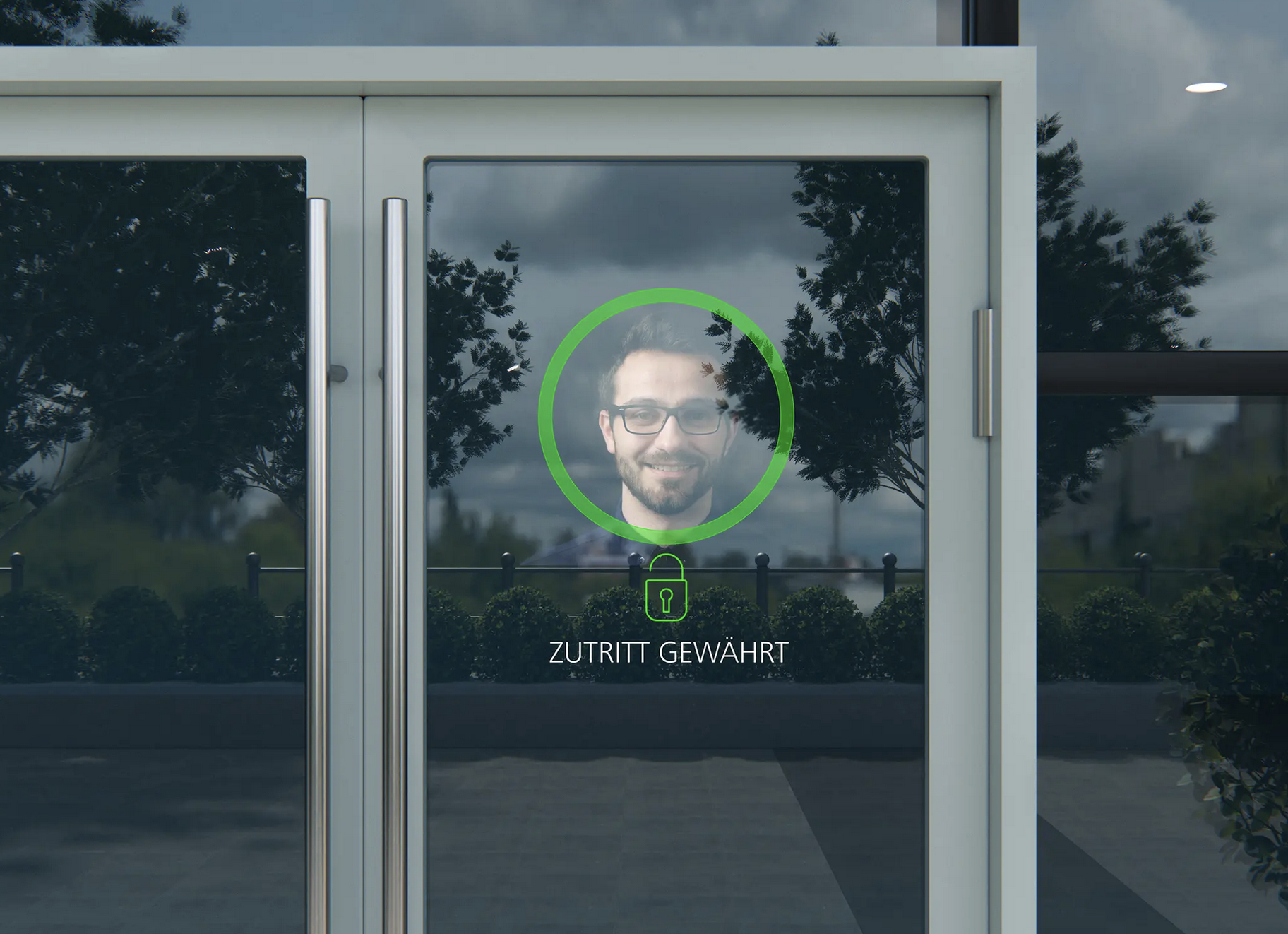CES is kicking off this week, and one of the technologies being showcased is from Zeiss' Multifunctional smart glass product division. Zeiss claims that their propriety coating and manufacturing process allows a typical window pane to also become a lens for an image sensor, which several tech blogs (ex: Digital Camera World) are claiming will create all kinds of wonderful (and scary) applications for "invisible" surveillance cameras.
Images released from Zeiss, such as the one below, envision security-related applications, such as a camera that can act as a seamless face recognition access control device:

This image is also showing the other, and more practical, application of these coatings and processes, which is to project an image onto a pane of glass. This is similar to how Heads Up Displays (HUDs) in some vehicles work.
Like many cutting-edge, and seemingly magic, technologies released at CES, the reality and liklihood of this becoming A Thing is somewhat limited.
The following video, showing the technology in action, is impressive for sure, but also illustrates several issues. One of the most predominent issues is what appears to be a very shallow depth of field. The face of the person who looks to be filming the video is in focus, but objects very close to the glass, or behind the person, are very blurry. The image is also in black and white, and looks to be somewhat soft overall. Also, due to basic laws of physics in regards to how photons of light behave, the more transparent the glass is, the less light that can be effectively channeled to an image sensor in this application. This means that low-light performance is likely to be exceptionally poor, and also that dynamic range is going to suffer.
These technical limitations may be able to be reduced a bit with additional R&D, but most likely this system will never be able to rival modern surveillance cameras in terms of depth of field, resolution, or detail.
In order for a pane of glass to be utilized as a camera lens, it needs to be manfactured with Zeiss' technology, so these "invisible" security cameras cannot be retrofit into existing windows or glass doors.
Still, there may be potential applications for this technology in security and surveillance. In particular, this could be utilized as a way to do tracking of people throughout indoor environments, where traditional cameras are used for overview shots and higher resolution images, with the "window cameras" being used for overall tracking or location purposes. In this scenario AI-based image upscaling and re-identification could be utilized to provide an accurate path for applications like retail analytics, business intelligence, or other functions where the goal is primarily to gather location data or history instead of evidence-grade images.
Utilizing this for highly accurate face recognition may be asking too much of the technology. Similarly, expecting to utilize this as a general surveillance camera, capturing accurate and details color images over a large area is unlikely. Though for retail applications it may be sufficient to discern basic shopper demographic data.
The ability to project images onto the glass, utilizing the same basic coating and manufacturing processes, may be the more practical implementation. Particularly as touchless mobile credentials become more common, having an elegant way to indicate access granted/denied status on glass doors directly in the persons field of vision would be a nice touch.
No pricing information has been released, but this techology is likely to be priced in a way that makes it limited in applicability. Specialized coatings and manufacturing process similar to this can increase the manufacturing price of glass from 20%-100% per square foot. The costs, coupled with the reduced capabilities compared to traditional cameras mean this would likely be utilized in very limited applications.
Finally, regardless of price or performance, don't worry about being surveilled by invisible glass cameras in the near future. While Zeiss is showcasing the technical capability, there are no commercialized applications yet and no announced partnerships with camera manufacturers, or window glass suppliers, to bring this to market.

